
Cameron
-
Posts
158 -
Joined
-
Last visited
-
Days Won
3
Posts posted by Cameron
-
-
I had a chance to try out the Ollie during our recent publicized heat wave last week. The first day I was boondocking the high was 118. Wow.
While driving in the heat, I was very happy to see that all my tires did great, both on my truck and on the Ollie. Believe it or not, I haven't had any air loss in the tires since last summer when I picked it up. It sits most of the time but I have taken it out on a few trips. I've got about 3500 miles on it so far. Attached is a pic of my dash readout of the GMC TPMC system from my truck's dash.
I wish I had a generator to run the AC for longer periods b/c it was sooooo hot. I've got the Lithium Pro which allows me to run the AC off the batteries, but I do it just for short periods, like 30 to 45 minutes. I'm careful b/c I don't want to run the batteries all the way down while boondocking without a generator. I've never camped with a generator but I'm thinking that at times like this it would be very nice.
The solar panels, including my 100w portable panel plugged into the external Zamp port, did put juice back into the batteries but no so much that it was like plugging into shore power. They raised my SOC about 15% each day, but then I used that up in the evenings.
I experimented with trying to cool down the interior during the middle part of the day. No shade. The first day I ran the AC to bring the interior temp down, then shut everything up and left for five hours. When I returned the interior was like an oven! 105 degrees. The next day I kept the bathroom window and the rear window opened a crack and put the fan on at 30 percent blowing out to draw air through the trailer, then left for 5 hours. When I got back it was again very hot inside, but maybe a few degrees cooler than the previous day. So much for that experiment.
The Norcold fridge performed well. I had it up to 8 and the first day it was maybe too full, but it kept things cold enough. Not very cold, but cold enough not to spoil. The ice was still solid when I returned. I did rig up a little battery powered fan to blow hot air away from the exterior top fridge vent, which I think helped a bit.
At night I kept the ceiling fan on blowing in (30 percent) and another battery powered fan to blow across the bed and I slept well.
So, after testing out the Ollie in 100+ temps, I've decided that I need fridge fans (probably the Fridge Defend as discussed elsewhere on the forums) and also a generator to keep the AC on for longer periods. Also I didn't need to turn on the hot water heater because the fresh water tank warmed up to a cool but comfortable temp for showering.
-
 1
1
-
 2
2
-
-
Here's an update.
It's mid-day, no clouds. (Hot!) With the panel connected, directly facing the sun, my Lithionics app shows power generation at 53.1W, and 4A. When I disconnect the portable solar panel, it shows 26.3W and 2A. So, my highly scientific assessment shows that it works. I'm surprised that it seems to double the charge going into the batteries when the rooftop solar is 400w and the little portable panel is just 100w.
The provided charge controller is very basic and does not have settings for different types of batteries. So maybe a 300w portable panel would be better? Or maybe a different charge controller would be better? For the moment, it was an inexpensive panel that was already set up for plug and play.
-
 1
1
-
-
I'm going to take this off on a little tangent, but I think it's relevant to some of the posts.
In hot weather boondocking, I'm using my Lithium Pro package sparingly. For example, after getting back to the Ollie in the afternoon, I'll turn it on to cool down the interior temps, maybe running it for 30 min. Then, while preparing dinner I might run it for another half hour. Then, when getting ready for bed I might run it again for a half hour. This might bring the SOC from 85% down to 55%. Then, the next day, the panels might bring the SOC back up to 75%. Sometimes I'd like to run the AC a bit longer, but, the numbers don't add up.
So, I'm considering getting a small generator for the main purpose of charging the batteries back up. Basically, to provide a little extra help for the solar panels. I guess if I was camping during cloudy times or short days the generator would also help. I could go with a 1000w generator, nice and small and light, or I could get the 2000w or 2200w which seems to be more popular with folks here. How quickly would a 1000w generator charge up my batteries? Does it make sense to get the 1000w or should I just get the bigger one so I'd have less run time (less noise!). Right now my goal is not to run the AC directly off the generator.
-
Wow. Perfect timing. I've decided that I need to get a fan for my fridge because I also like to boondock in warmer weather. I'm thinking about the Fridge Defend, but want to know about Dave's project also. Whomever is doing a mod to cool off the fridge, please show off your work with some pics and step by step instructions. I'd be very appreciative.
-
hi john,
i took delivery 14 months ago and i thought i was prepared. i'd read the forums and made lists of things to check. i thought i was taking my time and asking questions and being very careful. of course, there were a bunch of things i missed. it's so true that the excitement really affects your ability to look at the trailer with a critical eye. like most new owners, i've had a number of issues pop up, and they're still popping. however, the service department is really incredible about answering questions, problem solving, and resolving any issues with the trailer. i've opened plenty of tickets in the short period since i've had the trailer.
i recommend that after picking up your trailer, stay in the general area for a few days. try all the components. try them while connected to shore power, and not connected to shore power. look at all the forums and then check your own trailer. for example, if there's a post about someone finding a loose nut or bolt somewhere, check your trailer to see if you have that same problem. open up all the interior hatch doors (under the beds and dinette seats) and try to familiarize yourself with what you find in there so that you at least know what the inverter looks like and where it is.
sounds like you're doing everything right so far, so i don't think there's anything else you can do before delivery. i think the immediate days and weeks after delivery is when you'll really get up to speed.
-
 1
1
-
 3
3
-
-
I've got the 390 ah system with three lithiums. Most of my boondocking so far has been in warmer weather, sometimes hot. The AC is very handy during meal prep (30 min?) or for a nap (90 min?) when it's just too darn hot inside. On those occasions the AC worked great and was much appreciated. With the Lithionics app on my phone, I can monitor in real time the draw on the batteries and watch them go from something like 87% to 65% for a longer AC use. I do this knowing that it will take longer for the solar panels to charge the batteries back up. I don't have a generator. I was told by Anita before I bought my trailer that the batteries would run the AC for four hours. I've never tested that. I think that once you have your trailer you'll be able to experiment while boondocking to see exactly how much you can use the AC. If you want to use it a lot on a regular basis, well, the batteries won't handle that and you'll need a generator.
-
 5
5
-
-
I haven't even seen it yet but I'm already wanting wings!
-
 2
2
-
-
I got a portable solar panel (aka blanket/suitcase) to hook up to the external Zamp port. The price was good, so I thought I'd try it.
Hooked it up today, seemed to work fine. The top connection in the port is the positive, so I made sure to connect the SAE connector correctly. This panel comes wired correctly, so I didn't need an adapter to reverse polarity.
I turned off the rooftop panels then checked the Lithionics app, which didn't show the batteries getting any juice from the portable panel. Don't know why. The controller showed 5.0A, not very much. It's really light and easy to hook up but I'm not sure if it will give me enough juice to make it worthwhile. In truth, I haven't had a problem with AC/DC while boondocking. I might run it down to 60% at night, but the next day it'll charge back up to 85% or 80%.
-
 8
8
-
-
If you are germ-phobic, don't get it. (although it's actually very hygenic.)
If you have delicate sensibilities, don't get it.
If the thought of wiping down the bowl if your aim isn't perfect makes you faint, don't get it.
If the thought of putting your TP in a bag after wiping freaks you out, don't get it.
If you plan on mostly camping in sites with water hookups and dump tanks, don't get it.
However,
If you consider yourself sort of rough and tumble, get it.
If you plan to boondock, get it.
If you're comfortable talking about (joking about) BMs, get it.
-
 5
5
-
 1
1
-
-
I never would have thought to do this until I read your post and now I feel I must do it. And I can, thanks to your super detailed instructions with parts and photos.
-
 5
5
-
-
The SeeLevel monitor must be an industry favorite because in the past, when I was deciding whether or not I wanted a trailer, I rented a Jayco and also an Airstream. Both had the same SeeLevel monitor. It definitely wasn't accurate with those two trailers tanks. I like your advice John, and I'm going to do that just because I'm curious. If it turns out that I can pull out 30 gallons and the SeeLevel still says I have 20% left, I won't be surprised. That's why if I'm going boondocking I always have extra water jugs.
-
 4
4
-
-
My pump started to pump air with my meter showing 19%. The trailer is parked, level. It's Hull 841 so I assume it's got the updated plumbing. Didn't try to raise the tongue or anything. Just filled up the tank again with a hose.
-
what was the issue?
-
 3
3
-
-
7 hours ago, NCeagle said:
Fans do indeed help in hot weather. I have just installed the Fridge Defend by ARP on my Norcold 4000, which included 4 fans..Two small fans inside the fridge as well as two larger fans for the lower and upper outside vents. Oliver already had installed an optional fan in the middle of the outside vents, so I now have 3 fans working in sync outside on 3 different levels (bottom, middle and top) and the two interior fans.
I have run a few tests the past few days with the new fans on and off in 95F-100F heat. I started with a room temperature refrigerator and a setting of 6 on the fridge temperature. The minimum temperature the fridge could achieve was reached in each case in about 15 hours (when the first off/on "cycle" occurred).
The results were pretty convincing:
Min temp in 15 hours with single Oliver installed fan: 40.0F
Min temp in 15 hours with all 5 installed fans running: 28.1F
I wish I knew which of the fans were most important, but the way the ARP is wired, it's all on or none on. I suspect it's a combination of all the fans.
Nice thing is I bought the ARP for peace of mind as I do tow with my fridge running as most of us do and I know the absorption fridges are inefficient and can be dangerous when off level for even a few minutes. Nice bonus to add the fans (relatively inexpensive) along with the ARP controller.
This modification, the Fridge Defend, seems like a complete no brainer. Seems like the sort of device that should be standard on all RV fridges. Thanks for your posts (here and elsewhere). It's definitely on my list for this fall.
-
 2
2
-
-
Here's my quick hack to get hot air away from the fridge. Big thanks to Katjo for turning me onto this fan from her fantastic series of videos. Love them! Anyway, the fan charges up with a USB, then runs on its own internal battery. I hung it onto the outside of the trailer with a bungee. I really felt the hot air coming out. Today it was only 90 degrees so it was just a test run for when I'm back in the desert again in 100 degree weather.
https://www.amazon.com/gp/product/B091GRLBHZ/ref=ox_sc_act_title_3?smid=A19DWMTD5OSZWP&psc=1
-
 1
1
-
 1
1
-
-
I've usually towed with both vents open, or at least the main vent. Haven't noticed any problems so far.
-
Hi Katjo
I also gave this great thought last year before I picked up our trailer. I can't store it where I live so I keep it at a friend's property about three hours away. It's not covered. I consulted with SeaDawg who told me that they've never covered their trailer either and simply wash it and wax it twice a year with good quality marine products. I've done the same and so far so good. It cleans up very nicely. So, if your primary concern is about keeping the gelcoat clean and shiny, I think you'll be OK without a cover.
-
 1
1
-
 3
3
-
-
Hi Sak
That's weird. Doesn't seem like the wind could crack it but who knows. The important thing is to make sure that the shroud doesn't come flying off to hit someone behind you on the road. If the other connectors are secure, you're probably OK but if it were me I'd want to fix that.
-
 4
4
-
-
Again, I have to wonder if the speed of production is the culprit. I know Oliver has been ramping up production numbers in the last three years, which puts more pressure on the line workers. With that pressure I think it would be easier for the person(s) installing the wiring to miss something, resulting in this post. A sharper focus on quality control will benefit OTT, and I hope they're discussing this on a daily basis.
-
 2
2
-
-
When you talk to service tomorrow, they'll probably recommend that you turn on and off all the breakers and switches and things. Go under the streetside bed, look for the two red button switches, hit the button to open the circuit, then close them again and see if that helps. That should reset the inverter.
Also, once before when my Xantrex "died", i was able to bring it back to life by plugging into shorepower. Maybe try connecting and disconnecting a couple times from your shore power.
-
 2
2
-
-
Do you mean that the screen material has come loose from the edging? Maybe a pic?
-
 1
1
-
-
This is why I bought an Oliver. Rough, tough, ready for boondocking. This is off of Highway 395, north of Mono Lake in California. Take Virginia Lakes Road for about six miles (paved) then turn onto Dunderberg Meadows Road (gravel) and look for the spot you want. It's all national forest land so the price was right. We took a spur with big bad rocks, but by crawling along and trying to pick the least bad path, the Ollie performed like a champ. The boondocking inlet port let us fill our fresh water tank again from a couple of 6 gallon water jugs I carry. The sun charged up our batteries and let us use all juice we needed. A hot shower and cold cocktails made cloud watching even better. And the composting toilet makes finding a dump station a non-issue.
-
 13
13
-
 1
1
-
-
8 hours ago, Cameron said:
Hi Ralph,
That looks very cool. (Pun intended.) Could you provide some instructions on how I might do that? Thx!
Oops, I mean Jim, you're the magician with this trick.
-
16 hours ago, Jim and Frances said:
Ralph,
We recently ran into the same issue while out at the beach in +95F temps. We use a fan inside the frig for circulation but we likely had a little too much food inside. We also have screens installed, top and bottom. We could not extend the awning to provide some shade due to high winds. We ended up using a little 120v fan sitting on a little table blowing into the base of the unit with both lower and upper covers off. This helped a lot. The stock internal fan was working - just not enough heat exchange going on.
A quick online search reveals ammonia cycle refrigeration is challenged in +90F temps. Lots of ideas for extra fan kits to help out. We opted to try our own tapping into the frigs 12V power and using a normally open 30C temperature sensor switch. Temp mounted on aluminum bar with lots of snap-lock strips (not sure how the adhesive on these 3M strips will hold up in the heat). We be testing soon to see how it works.
Hi Ralph,
That looks very cool. (Pun intended.) Could you provide some instructions on how I might do that? Thx!
-
 1
1
-


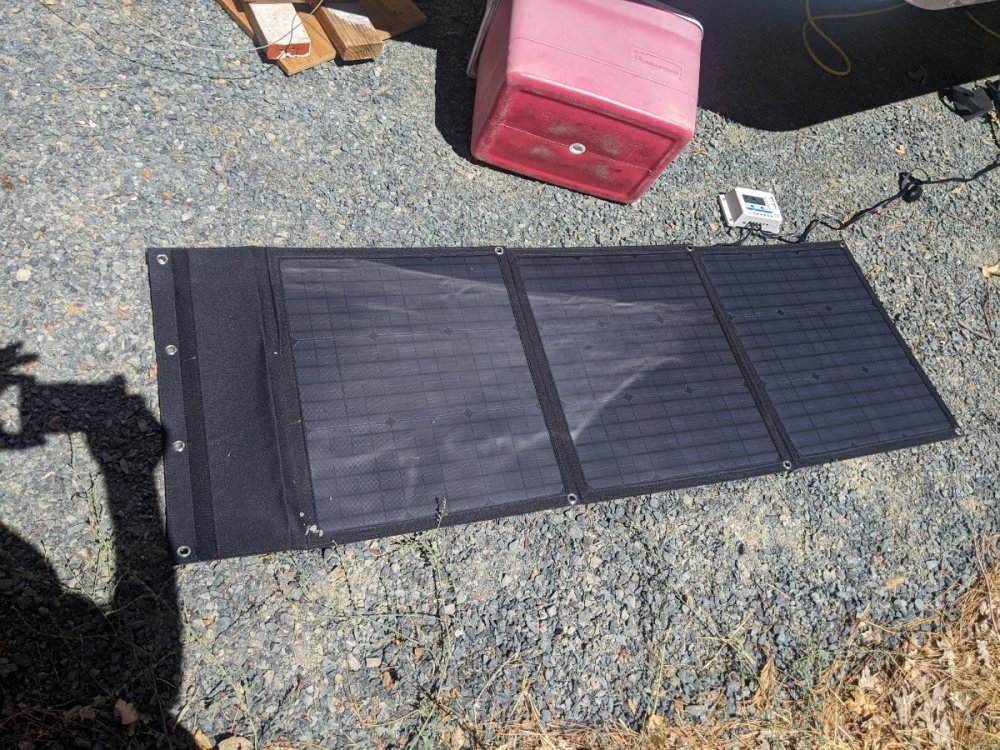
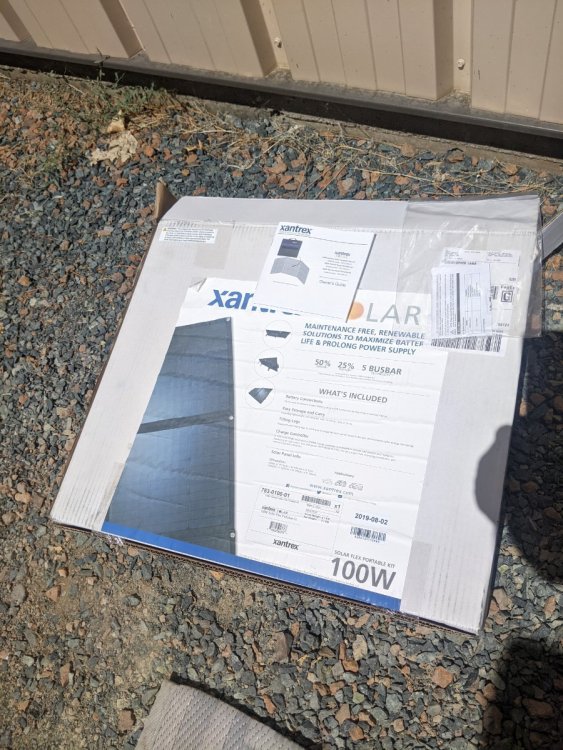
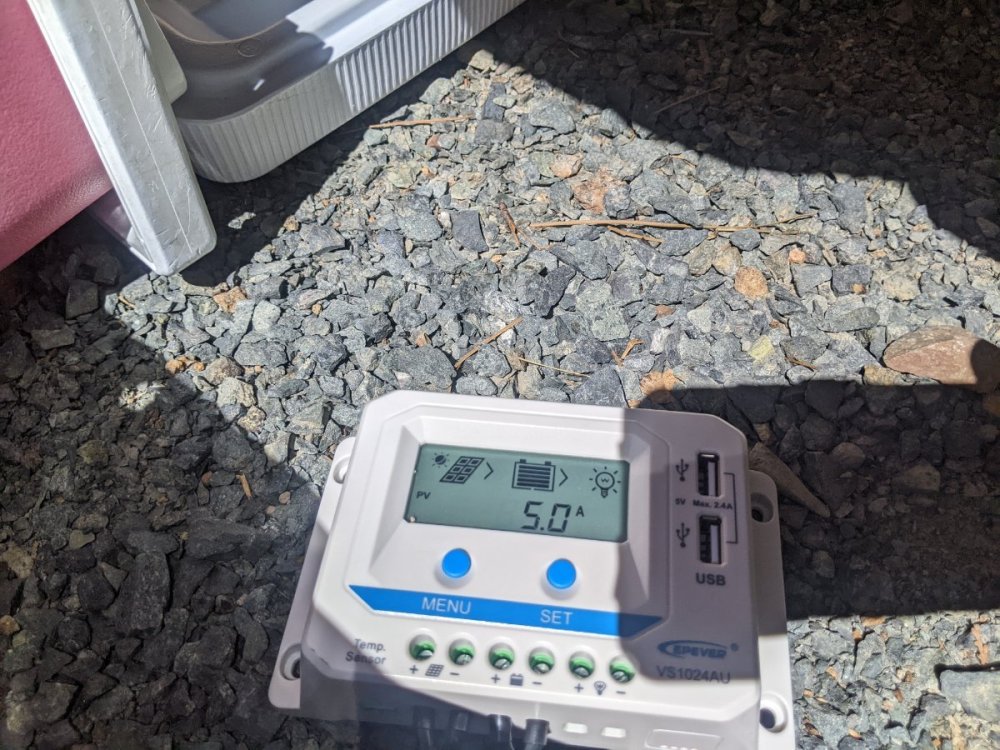
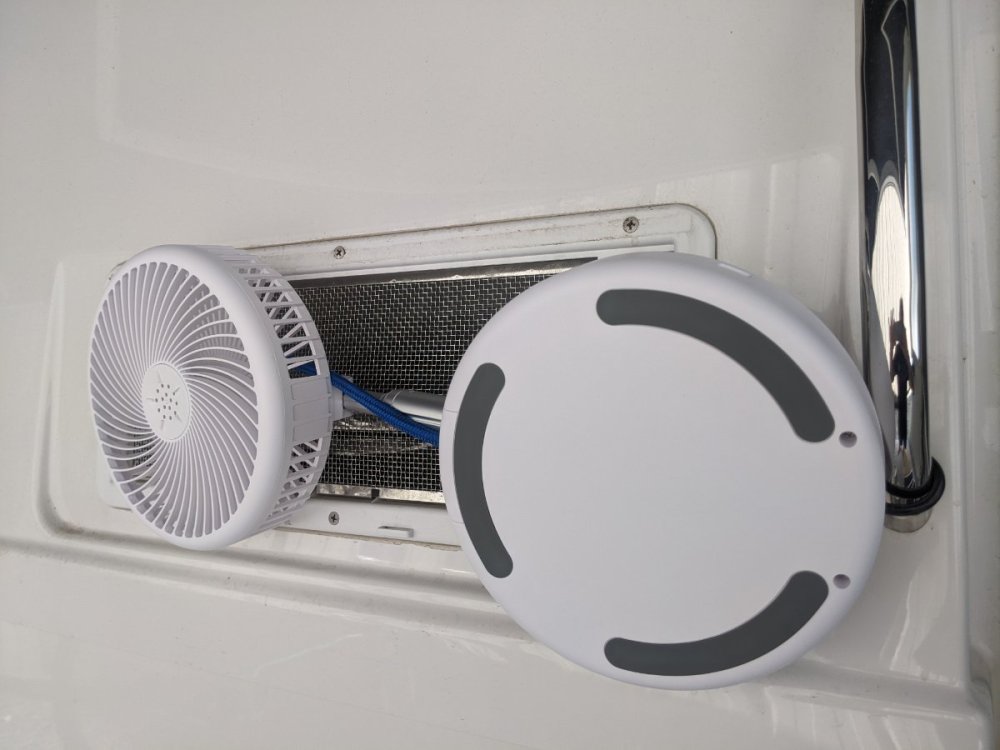

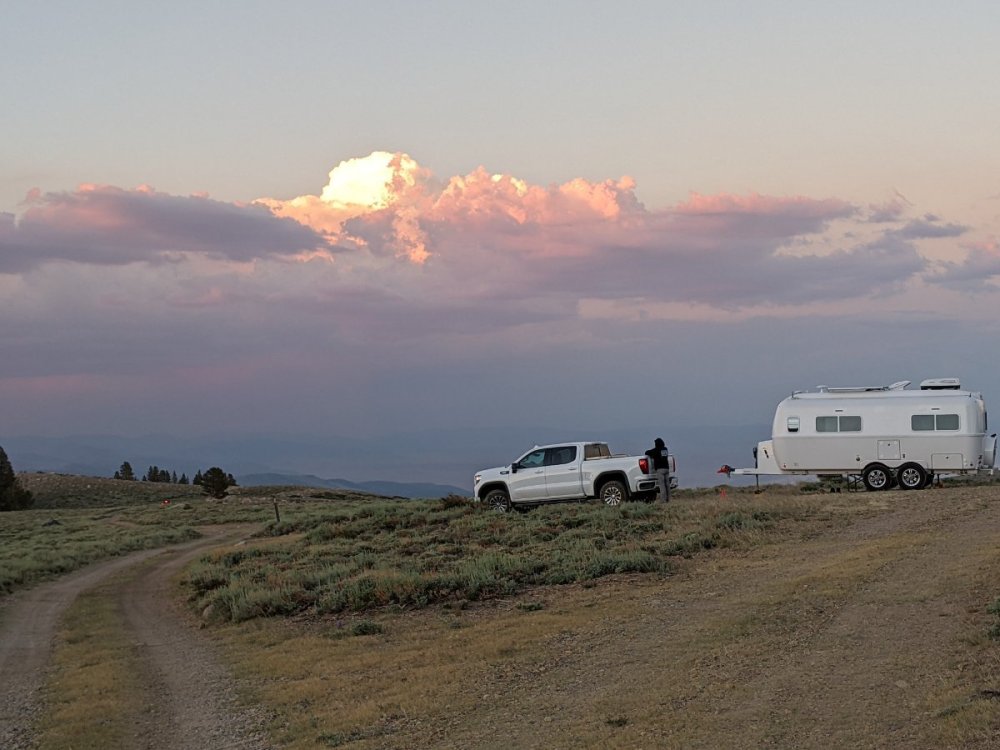

Where’s Ollie?
in Campgrounds & Parks
Posted
Ok, that last pic of the low bridge makes me anxious. we don't really have those things out west. once i start going on longer trips that take me to the east coast, i'm sure i'll encounter those and hopefully not ruin my Ollie!!